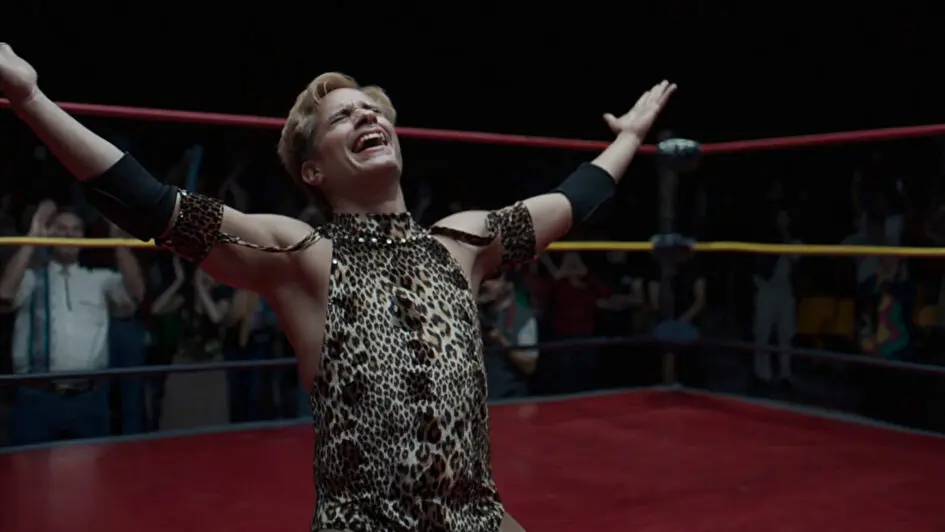Currently, professional wrestling is garnering significant attention, particularly with the recent collaboration between the leading force in sports entertainment, World Wrestling Entertainment (WWE), and the MMA trailblazers, the UFC, resulting in the formation of TKO, a publicly traded combat sports corporation. Meanwhile, All Elite Wrestling (AEW), a formidable competitor, continues to make strides by signing promising young talent from independent circuits and attracting industry veterans like Sting, Adam Copeland and Jon Moxley. The return of CM Punk at the Survivor Series has also generated considerable excitement, defying expectations, given the historical animosity between Punk and the WWE. It’s undeniably an exciting period for wrestling enthusiasts.
Coincidentally, this week, I had the opportunity to review the biographical drama film, Cassandro.
Directed by Roger Ross Williams and featuring Gael Garcia Bernal in the lead role, the film unfolds in the late ’80s, portraying the journey of Saúl Armendáriz, a young wrestler from El Paso, Texas, aspiring for fame in the world of lucha libre. Based on his frail appearance, Saúl consistently plays the role of a “jobber,” designed to enhance the credibility of other wrestlers by repeatedly losing to them. However, his encounter with wrestling trainer Sabrina (Roberta Colindrez) opens new possibilities, leading Saúl to adopt an exótico persona, a male wrestler who performs in drag.
Embracing this unique character, Saúl, now known as Cassandro, achieves remarkable success, rising to prominence as one of the premier performers in the lucha libre universe. But little did he know that that fame would lead to bigger things.

Gael García Bernal and El Hijo del Santo in Cassandro. Photo: Alejandro Lopez Pineda © AMAZON CONTENT SERVICES LLC
The tradition of professional wrestlers embracing drag to connect with audiences is not a novel concept. In my youth, USA-based wrestlers like Adorable Adrian Adonis, Gorgeous George and Adrian Street all assumed roles as heels (wrestling villains). Their flamboyant antics around the ring often elicited homophobic slurs from the crowds they entertained.
In the ’90s, Texan wrestler Dustin Runnels adopted the Goldust gimmick — an androgynous character adorned entirely in gold, occasionally employing provocative moves on opponents. WWE even explored the ambiguously gay storyline with Billy and Chuck, revealing that their on-screen homosexuality was a charade for publicity. Today, with societal attitudes evolving, wrestlers like Sonny Kiss and Dalton Castle continue to flaunt flamboyant personas in the ring. Regardless of their personal lives, these wrestlers deliver performances that leave lasting impressions on spectators.
Cassandro was a wrestler unfamiliar to me before watching this movie. When reviewing a biographical film, I like to assess how accurately the on-screen portrayal aligns with the real-life story. In the case of Cassandro, the film captures the essence well.
Saúl Armendáriz left school at 15 to pursue wrestling, initially adopting the persona of Mister Romano. Encouraged by fellow gay wrestler Babe Sharon, he embraced the exótico identity, transitioning from Rosa Salvaje to Cassandro, inspired by a beloved brothel keeper named Cassandra. While the film doesn’t delve deeply into these details, such tidbits add a layer of intrigue to the actual person behind the cinematic representation.
Gael Garcia Bernal delivers a stellar performance as Cassandro. His portrayal of the transformation from a hesitant, troubled individual into a confident cultural icon is convincing, due to his exceptional acting. Bernal skillfully guides both the character and the audience through this journey, making the self-empowerment breakthrough believable. Cassandro’s struggles with family disapproval, especially from his father, are palpable, reflecting the challenges faced by individuals growing up with hidden aspects like homosexuality in the conservative ’80s. Bernal effectively communicates the pain, the highs and the lows of Cassandro’s experiences, showcasing his acting prowess.
While Cassandro delivers an exceptional performance, a significant flaw surfaces in the film. Like many biographies, it falls short in exploring moments of failure or crisis in the protagonist’s journey. Despite encountering a few stumbling blocks along the way, the movie creates the impression that Cassandro had a relatively smooth and straightforward ascent to the pinnacle of the lucha libre industry. Insights from his personal life reveal several aspects that could have enriched the narrative, offering pivotal moments for Cassandro to overcome significant obstacles and define his character. The film, however, condenses his story into a 90-minute runtime that feels more like a highlight reel than a comprehensive biography.
I give Cassandro four out of five stars. Gael Garcia Bernal’s performance is exceptional, and the entire cast feeds off his energy, delivering a compelling portrayal throughout. However, the storyline tends to lean more toward a fairy tale than a true-to-life biographical narrative. Incorporating more of Cassandro’s real-life events could have added depth to both the story and the character, offering additional reasons to rally behind this remarkable individual.
Nevertheless, Saúl Armendáriz, the man behind the movie, stands as an inspiration to many and deserves commendation for his impactful contributions to the community. Cassandro, as a film, successfully highlights all the poignant moments in his journey.
